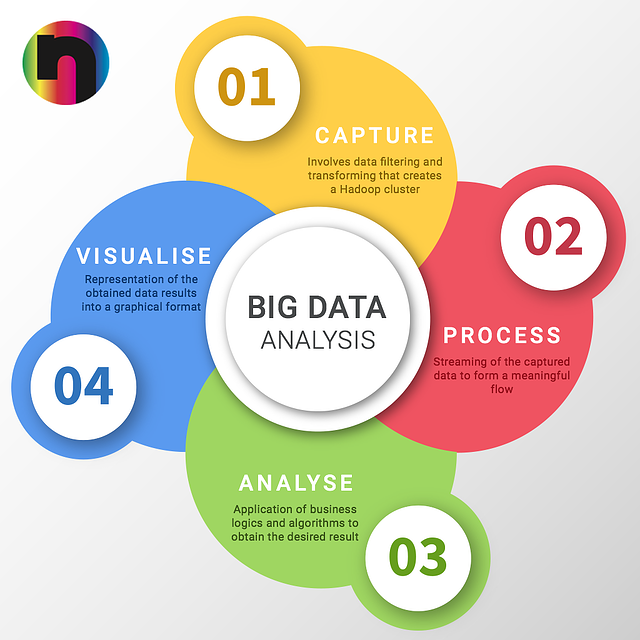

Photo by Marvin Meyer on Unsplash
Big data is commonly associated with streamlining industrial processes and conducting research work. However, the World Economic Forum states that big data will continue to go from strength-to-strength. Now, experts are projecting that by 2025, about 400 exabytes of data will be produced globally — the equivalent of 200,000,000 DVDs. That’s a lot of data, which, in turn, emphasizes just how far the applications of big data can be pushed.
HR practices, in particular, are projected to be the next big thing when it comes to the big data revolution. This is especially useful considering HR encompasses a wide range of tasks — from recruitment to training. When all of these tasks are taken into account, inefficient HR practices could cost companies a lot of time and manpower that could be used more productively. This is what makes the rise of big data in HR so useful, as it has the potential to provide support across all of these different roles.
Recruitment and marketing
Today’s competitive job market means that both companies and applicants are being more deliberate with openings. While every company aims to attract the best talent possible, these candidates are also vying for the best opportunities available to them.
Therefore, marketing plays a big part in attracting applicants. To find the best candidates, HR staff need to understand the advantages of marketing, which is where big data steps in. It can be especially useful when filling up high-priority roles that require a lot of research, such as those in the tech industry. Yoss highlights the importance of efficiency and quality when it comes to looking for specialized skills like coding and software programming. Because of their exclusive expertise, extra care must be taken when looking for this type of talent.
At the same time, big data also allows HR to pool applicants' information to create a profile of their ideal candidates, which in turn helps narrow down the search to directly reach out to prospects. HR Dive explains that personalization is also crucial to the application process, with emails and messages providing a way for applicants to feel welcome from the start. After all, first impressions last — even for potential employees.
Team relations
When you think of what HR personnel do, the first thing that comes to mind is probably employee relations. This can mean anything from clearing up misunderstandings between teams, to acquainting new hires with their new department. The rise of big data has provided software with the information it needs to streamline operations. Previously on New Gen Apps, we discussed how big data and machine learning can be used to create a database to store common queries, such as questions on leave policies and payment schemes. That way, employees have all the information they need at their fingertips.
More importantly, however, is that big data can help HR personnel and team managers foster better employee dynamics. By measuring team performance against company KPIs, managers can pinpoint where employees might be struggling and act accordingly. This is what's known as collaboration analytics. On top of this, managers can measure team activity against individual employee tasks and adjust workloads accordingly.
In line with collaboration, big data can also help foster more transparency among employees. For instance, some companies have taken to using applications to track collaboration and tasks, which allows employees to hold each other accountable for their projects. By seeing performance updates, attendance records, and other similar metrics, both managers and employees get a better sense of how each person works. Having data points to reference can thus result in more effective communication and trust among teammates.
Employee engagement
In any organization, employee engagement is the fuel that keeps the team running. Without it, staff are more prone to unproductiveness and even quitting their jobs altogether. Fortunately with big data, employee engagement is now something that can be tracked and observed.
An article on Cio cites applications like HigherGround, which lets employees input how they're feeling. As a result, managers can pinpoint patterns and areas of concern among employees and create solutions accordingly. It is a much more approachable option compared to the traditional employee evaluation, since some employees may tend to hide themselves away at the risk of raising a few eyebrows.
Moreover, analyzing big data can also help employees track their performance. By seeing their progress build up, it can help motivate employees. Managers can even use this data to create individualized growth plans for their staff. Mentorship and overall growth in the company are two things that many employees look for, and analytics tools can help senior staff provide them.
Change implementation
Because part of the HR department's job is to serve as the mid-point between employees and executive staff, they are also the ones usually in charge of being change agents within organizations. This means that HR managers are tasked to ensure changes within the company go as smoothly and seamlessly as possible — whether it's a merger or acquisition, an overhaul, or company restructuring.
With big data, HR no longer has to dive into these situations unprepared. By leveraging employee data, they can create personalized training programs to ensure they ease into whatever new set-up better.
Additionally, it's up to HR to communicate these potential changes to employees. And once performance analytics are gathered from within the company, HR managers should be able to understand how a proposed change could affect employee morale. Human Resources Director emphasizes that communication is vital during times of change since employee behavior is what dictates whether or not a proposed change will actually be successful. Behavior and attitude are also what takes the longest to change.
Big data thus proves crucial in the planning stages of a change, as it allows managers to pool best practices and create procedures to minimize risk. Granting HR managers access to this data, in turn, helps them brainstorm on how to relay the information to employees in the most practical and effective way.
Need help with your big data initiatives? Get in touch

Benefits of using Big Data in Education
Data alone is nothing but the deep data analyzed can become a treasure in the form of reliable information, which can make a difference in the...


